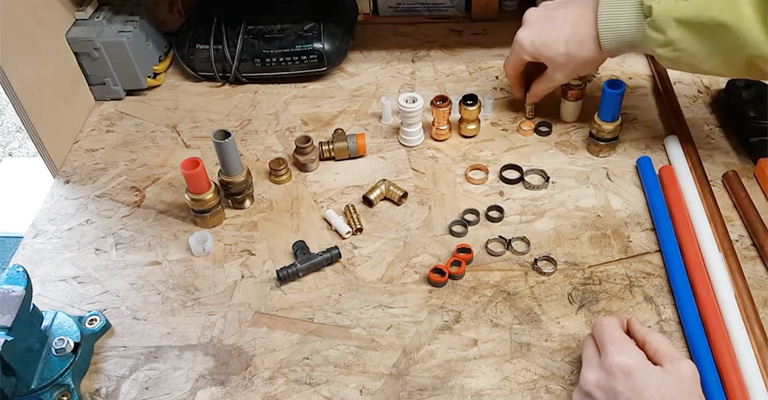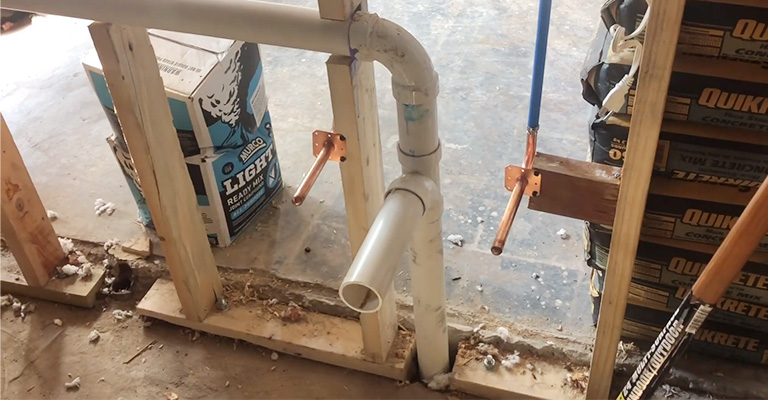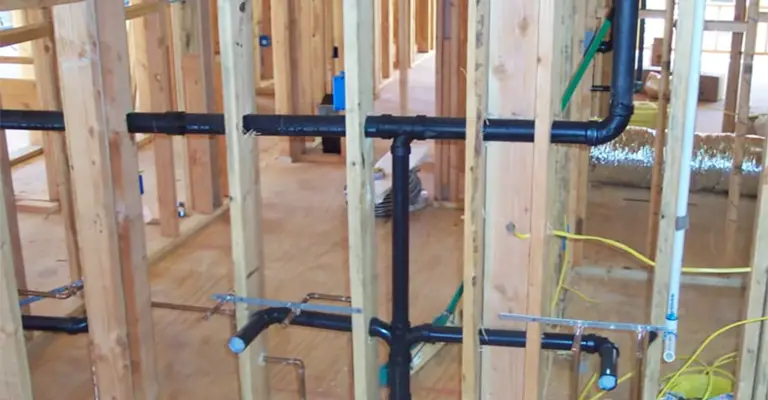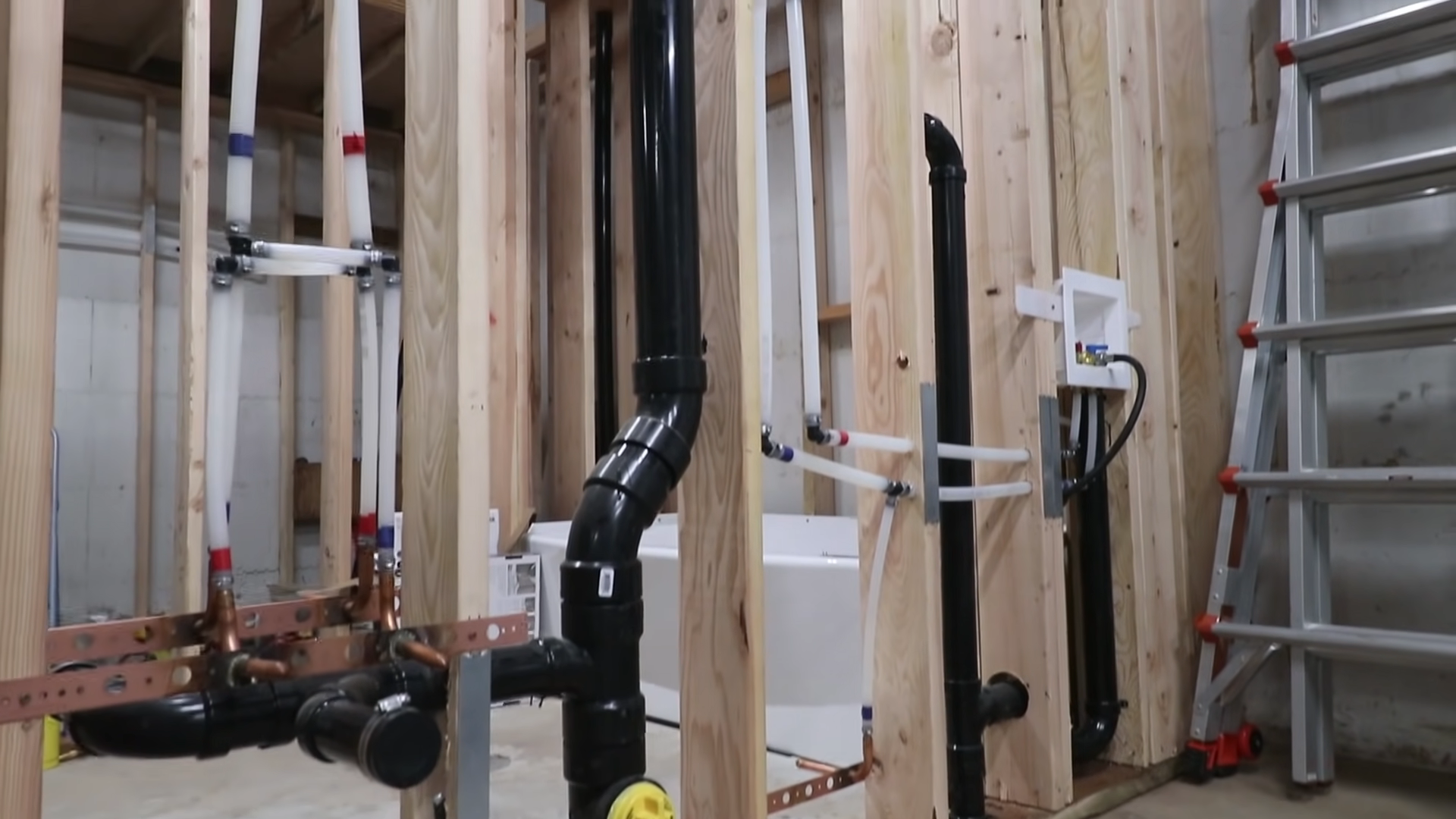Are you tired of seeing exposed PVC pipes in your home or office? Want to give your space a more polished and finished look? Look no further!
Whether you’re a DIY enthusiast or a professional contractor, this guide has everything you need to know to make your PVC pipe installation look seamless and professional.
So, get ready to impress your friends and family with your newly acquired skills and let’s dive into the world of PVC pipe installation. In this guide, we’re going to show you how to attach PVC pipes to walls like a pro.
Securing PVC Pipe To A Wall Requires The Following Tools And Materials

Putting PVC pipe on a wall doesn’t require any special tools or power tools. You only need to do the following:
Tools:
- Reciprocating saw or handsaw
- Measurement tape
- Drilling Machine
- A hammer
- 1 ½ Screw (For Vertical Pipe Installation)
- 3-inch Screw (For Horizontal Pipe Installation)
Materials:
In most cases, installing a PVC pipe on the wall doesn’t require a lot of materials. Nevertheless, it is safe to keep them since you need to cover up any wall damage or leaks.
Glue (Temporary Solution): Glue can be used to temporarily secure a plastic pipe. It works, though.
Cement: As an alternative to glue, cement can be used to cover PVC joints. In this way, the connection remains leak-proof.
Plumbers Putty: When it comes to water pipelines, plumber putty is always a good idea.
Attaching Horizontally Running Pipes

- The PVC pipe should be located along the wall studs. Along the length of the pipe, mark every other stud.
- At each marked location, place a clamp for PVC conduit over the pipe.
- Each conduit clamp hole should be screwed with a 3-inch screw. You will need to repeat this step until one PVC conduit clamp is positioned along each wall stud.
Securing Vertical-Running Pipes
- The PVC pipe should be measured every 24 inches. Mark the holes on each side of a PVC conduit clamp along the pipe at the 24-inch measurement. Mark the entire length in this manner.
- For each clamp placement, drill through both hole marks.
- Each drilled hole should be anchored with one wall anchor. Ensure the anchor’s top is flush with the wall by tapping it in place with a hammer.
- A 1 1/2-inch screw should be driven through each hole of the PVC conduit clamp. Put all clamps in place by repeating this process.
Tips For Securing PVC Pipe To Wall

Thinking about doing it yourself? There’s nothing wrong with it. The majority of DIYers fail to secure PVC pipes to walls because they make simple mistakes.
The walls or pipes are usually damaged in the majority of cases. Therefore, if you are doing it yourself, always follow these simple steps:
- Don’t Over Tighten The Screws
It may seem logical to overtighten connection screws. As a matter of fact, it is harmful to the walls. Don’t over tighten the screws. Distribute the connection evenly instead.
- Keep Spare Parts
It is inevitable that professionals will make mistakes. Make sure you have spare pipe, screws, and other materials on hand. This will save you a lot of time.
- Make Sure You Have The Right Tools At All Times
Have you ever wondered why plumbers make it look so easy? Keeping the right tools at hand is the key to their success. Therefore, you should also keep the right tools on hand.
The good news is that you do not have to go for every professional tool out there. We have discussed a number of tools here, so just gather them.
Final Words
A lot of PVC pipes are used for plumbing in homes, so PVC pipes have become a necessity.
In order to continue to use their interior space without having large PVC pipe obstacles, it is very important to arrange the pipes in a less invasive manner.
You can avoid bumping into pipes on a daily basis by attaching PVC pipes to the walls of your home.








